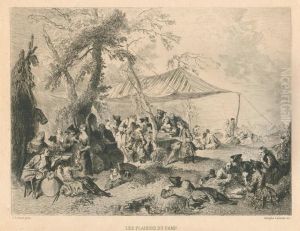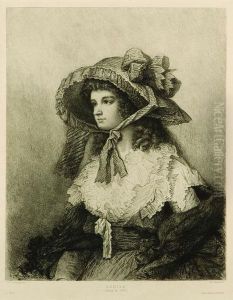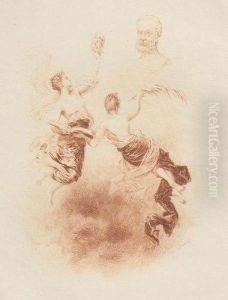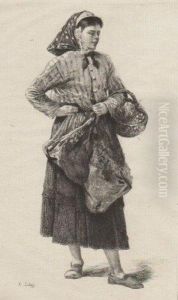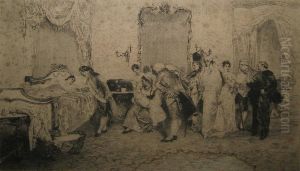Adolphe Lalauze Paintings
Adolphe Lalauze was a French printmaker and illustrator, born on October 8, 1838, in Rive-de-Gier, a commune in the Loire department of France. He is recognized for his etchings that display a high degree of finesse and detail, which made him a sought-after illustrator during his time. Lalauze's work is characterized by its delicate lines and attention to texture, which he achieved through his mastery of the etching process.
Lalauze developed an interest in art at an early age, and he pursued his passion by studying at the Ecole des Beaux-Arts in Lyon before moving to Paris to further his education. In Paris, he continued his studies under the guidance of renowned engraver Léon Gaucherel, which greatly influenced his artistic style and technique. Lalauze quickly made a name for himself as a skilled etcher and began receiving commissions for book illustrations.
Throughout his career, Lalauze contributed to the illustration of numerous books, working with various publishers to enhance the visual appeal of literary works. His etchings often accompanied texts by classical authors, such as Rabelais and Balzac, and his work was highly regarded for its ability to capture the essence of the narratives. In addition to book illustrations, Lalauze also produced a number of standalone etchings and prints that depicted scenes from everyday life, historical events, and landscapes.
Adolphe Lalauze's contributions to the art of etching were not limited to his own creations. He was also a teacher, sharing his knowledge and technical skills with younger artists. His influence extended through his students, many of whom went on to become accomplished etchers in their own right.
Lalauze's work was widely appreciated during his lifetime, and he received several honors, including a gold medal at the Universal Exhibition in Paris in 1889. His etchings continue to be admired for their technical precision and the way they reflect the cultural and social atmosphere of his time.
Adolphe Lalauze passed away on May 13, 1906, in Paris. Despite the changes in artistic trends over the years, his work remains a testament to the enduring appeal of fine etching and its place in the history of illustration and printmaking. Lalauze's legacy lives on through his etchings, which are still collected and exhibited around the world.

